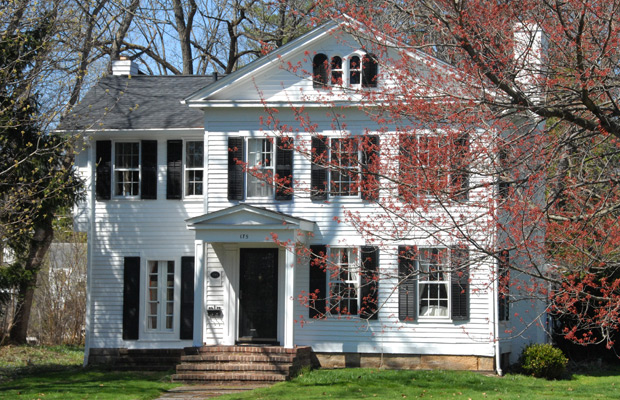Thurs, Nov 13, 7:00pm at Barlow Community Center. Dr. Megan Shaeffer discusses the history and archaeology of Wood Hollow Metro Park
Pierpont Edwards House

The Pierpont Edwards House is another original Day’s Addition house, like the classic Greek Revivals at 134 and 183 Aurora, built in the early 1850s in anticipation of railroad prosperity.
It is Greek Revival in style, with a pedimented portico, wide frieze and corner boards, and a Tablets of Moses front gable.
The west wing was originally one story, and there is a rear addition. The foundation is cut sandstone. The original walnut handrail remains in the front hall.
The Pierpont Edwards House is notable for both its architectural style and also what it represents in the economic history of Hudson.
In the mid-1800s, Hudson succumbed to railroad fever, thanks to the construction of the Cleveland-Pittsburgh line, which ran through town. John Smith and his partner Henry Noble Day believed the railroad would create an economic boom for the town and generate a need for increased housing and business. For a while, that’s what happened.
Unfortunately, Day gambled that if one railroad could create an economic boom, two would create a bigger one. Thus, he started the speculative Clinton Line.
He took on investors and created a bank to channel loans to fund his business ventures (such as the Pentagon building), as well as the railroad. He also launched his housing development, Day’s Addition.
The Clinton Line expenses soon outstripped estimates, and Day’s speculations collapsed, taking many Hudson investors’ fortunes with it. Thus, Day’s Addition was never completed.
The Pierpont Edwards House stands in testament to both the dream and failure of Hudson’s hope for the railroads.